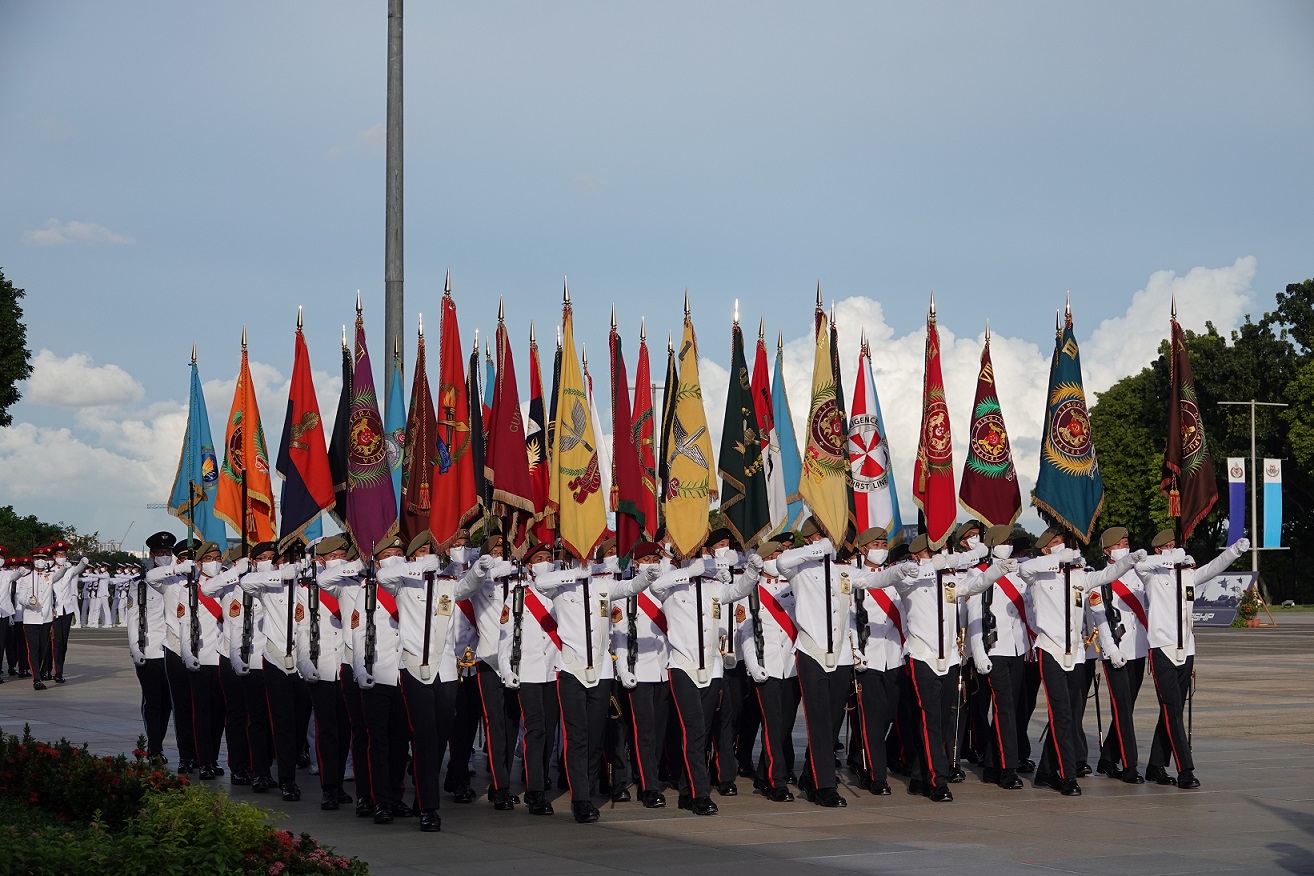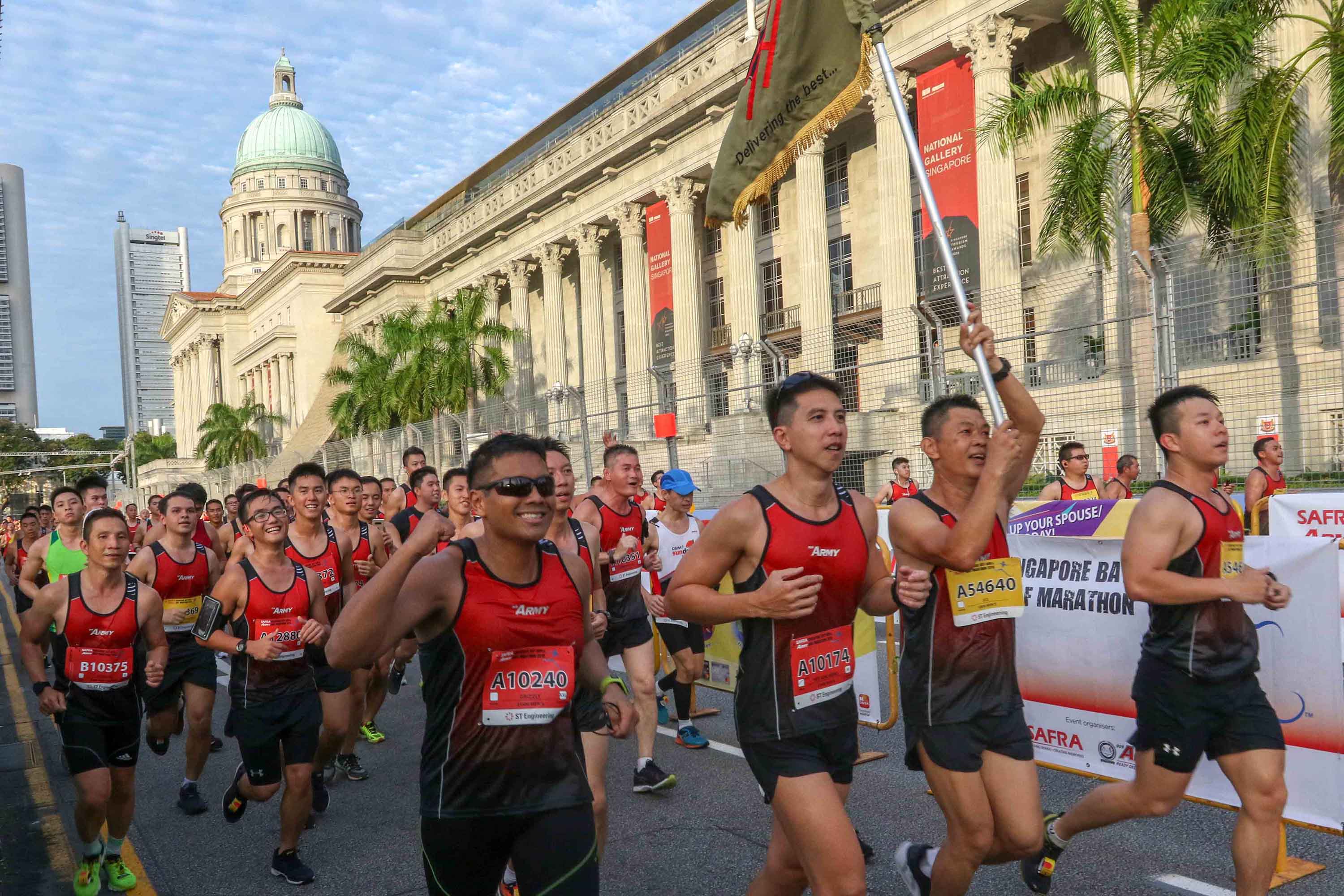 Cheers to a successful SSBR AHM 18!
Cheers to a successful SSBR AHM 18!
 Ensuring a Smooth SSBR AHM 18 - The People Behind-The-Scenes
Ensuring a Smooth SSBR AHM 18 - The People Behind-The-Scenes
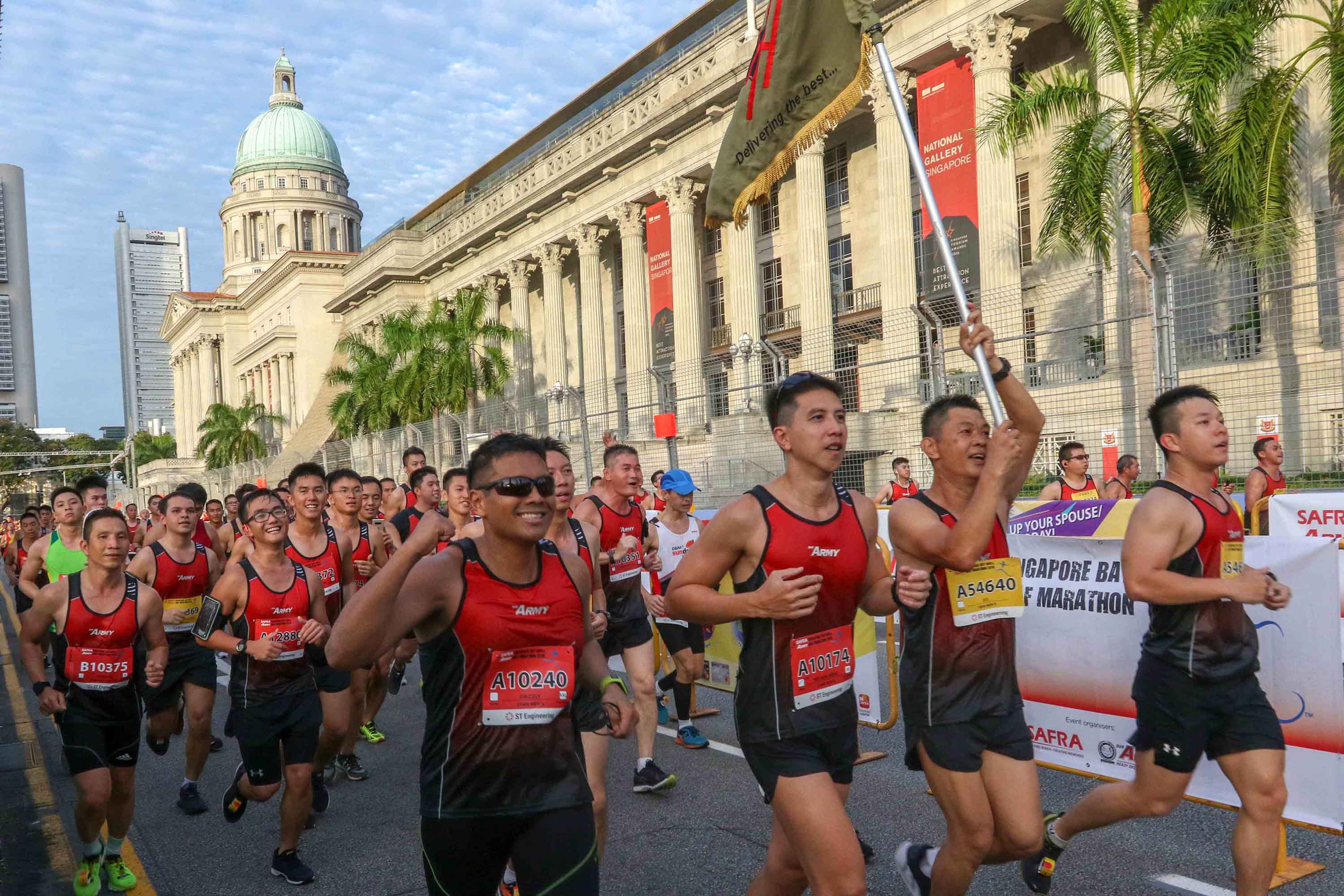
 Cheers to a successful SSBR AHM 18!
Cheers to a successful SSBR AHM 18!
As we look back on what happened two weeks ago on 26 August, we celebrate yet another successful SAFRA Singapore Bay Run (SSBR) Army Half Marathon (AHM)! This year, the Armour Formation emerged victorious, with the 21km AHM Men Category champion, 3SG(NS) Soh Rui Yong, paving the way. This year, we bring you an exclusive peek into what goes on behind the scenes during the planning and running of a Half Marathon. From the planning for contingencies to the marshalling of traffic, we explore the intricate components that worked together to ensure the marathon runs smoothly.
Safekeeping of Belongings
With more than 41,000 participants taking part in the AHM, it was a challenge to safekeep their belongings at a centralised location in an orderly manner. For LCP Amik Patnaik from the 48th Battalion, Singapore Armoured Regiment (48 SAR), handling a large number of participants requires systematic procedures that keep matters in order. "Large crowds are inescapable in these kinds of events such as AHM, and this translated to large numbers of bags and belongings deposited. As part of the organising committee, my duty was to organise the crowds in queues and use speakers to direct them to ensure that their bags are deposited in an orderly fashion before their run. This process helped to avoid confusion during the bags deposit before the event and the collection of bags after their run."

Directing the crowd to facilitate the bag deposit process.
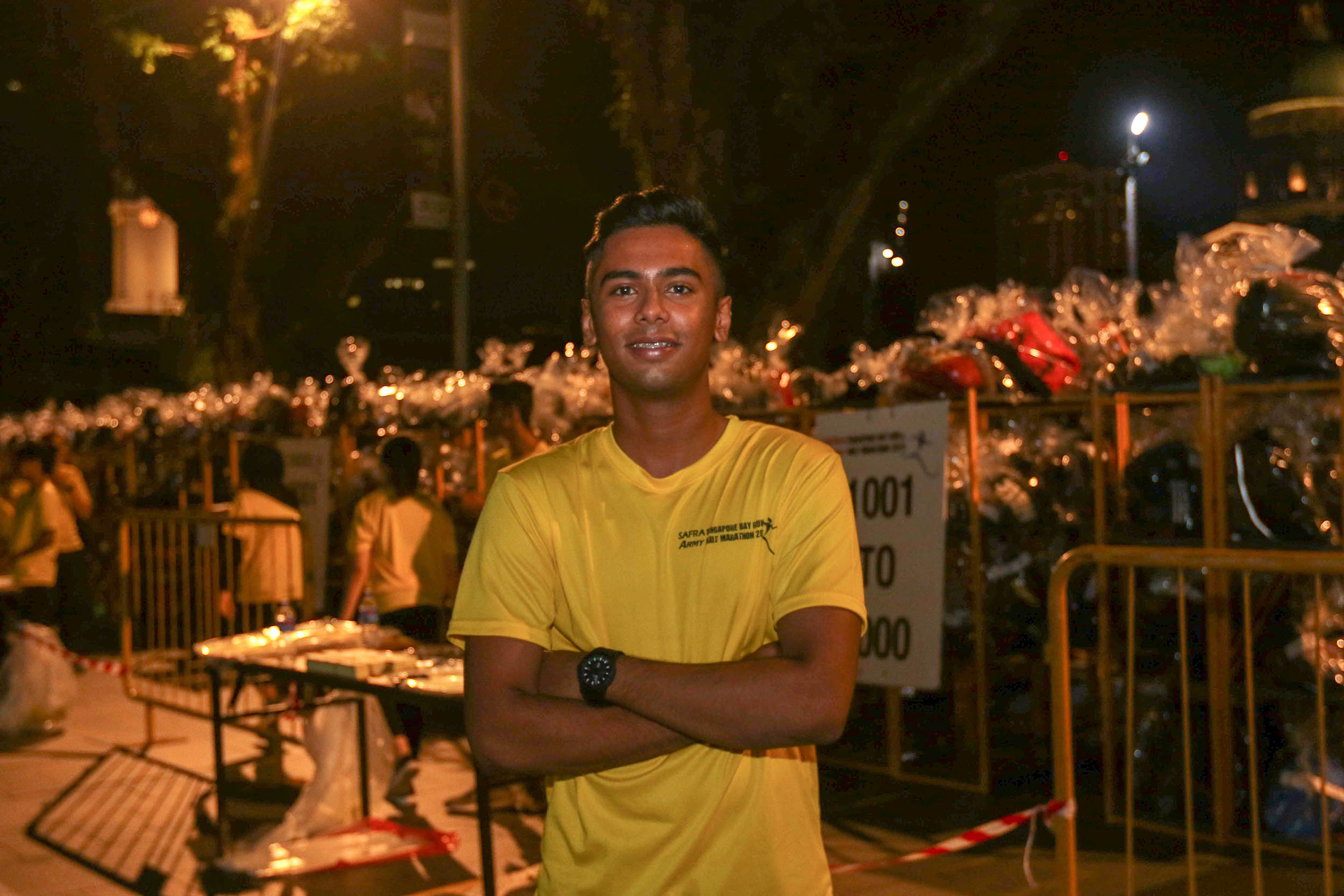
LCP Amik Patnaik, 48 SAR.
Tracking of Timings
Have you ever wondered how the organisers of marathons ensure that the integrity of the race is kept? LTA Vincent Tang from 48 SAR, shed light on how they ensure fairness during the race and keep the outcomes of the race honourable. "We do acknowledge that there can be several ways to complete the race unofficially. However, in order to qualify and get the official timing for the race, each participant must run through the respective checkpoints assigned for the race categories that they registered for. These checkpoints consisted of timing mats for the system to capture their presence. Therefore, if any of the participants did not fulfil these requirements, they will not be considered as having completed the race officially." With runners eager to see how they fared, LTA Vincent and his team also made sure the results were out as soon as possible.
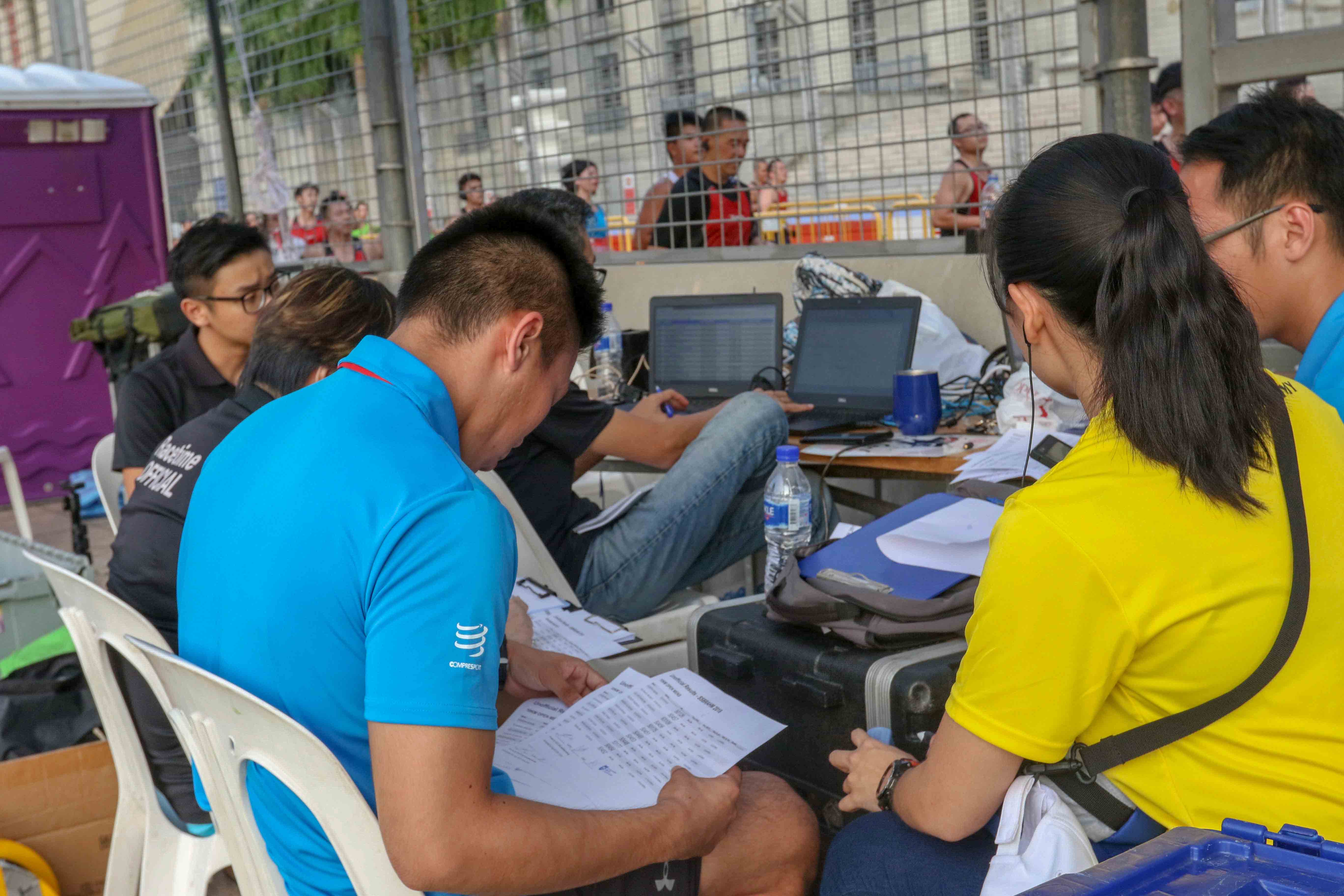
Getting the race timings out!
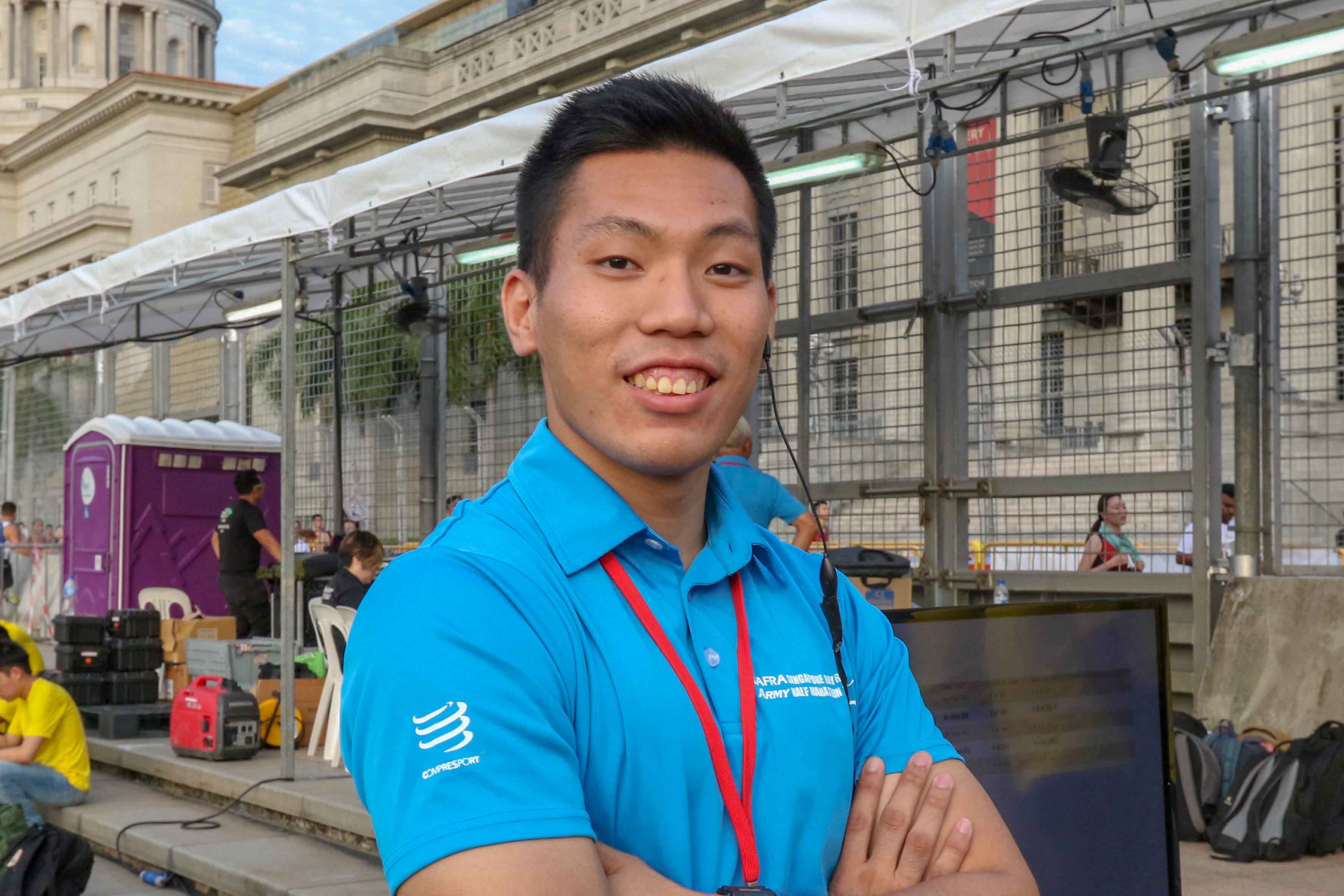
LTA Vincent Tang, 48 SAR.
Maintaining of Security – Deploying Mobile Crash Barriers
With the longest course spanning 21 km in the race, securing every point to ensure the safety of the participants becomes more challenging. SSG Gary Kho from the 12th Command, Control, Communications, Computers and Intelligence Battalion (12 C4I Bn) shared one of the means the Army had utilised to enhance security at the venue: Mobile Crash Barriers (MCB). "To ensure a safe and successful event, a comprehensive security plan had been catered for. As part of this plan, two MCBs were deployed as part of this year's security plan. Weighing at 2.5 tons each and with an opening of 3.5m, the MCB can support up to 20 tons of weight and stop up to 90,000 Newtons (9 tons) of force. The barrier is able to be deployed to stop vehicular threats in less than two seconds, making it effective in controlling vehicular access. The MCBs were deployed strategically at road junctions; strong enough to withstand against vehicular threats, ensuring that security was maintained in the Padang, and the safety and well-being of the participants not compromised."
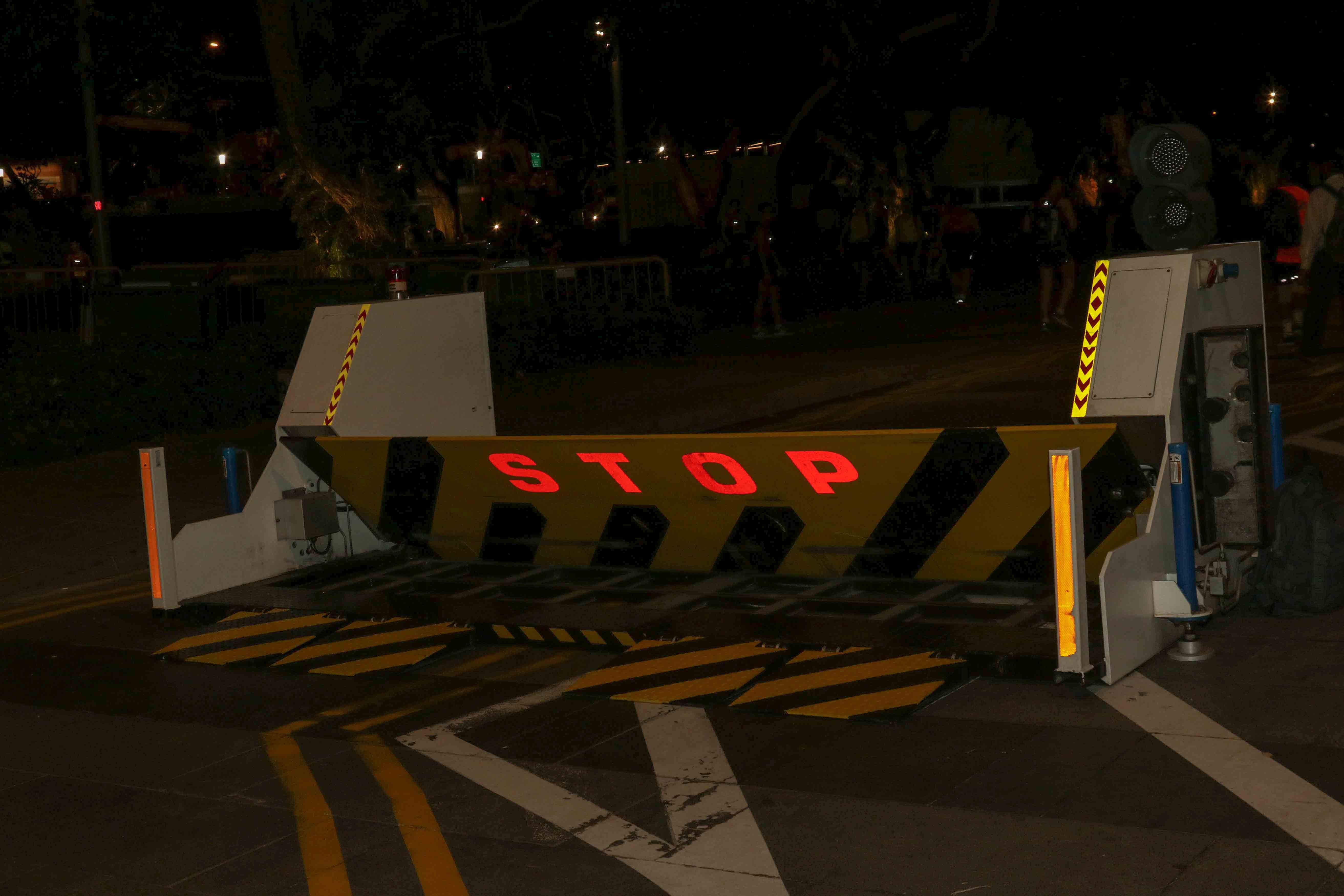
The Mobile Crash Barrier deployed as part of this year’s security plan.
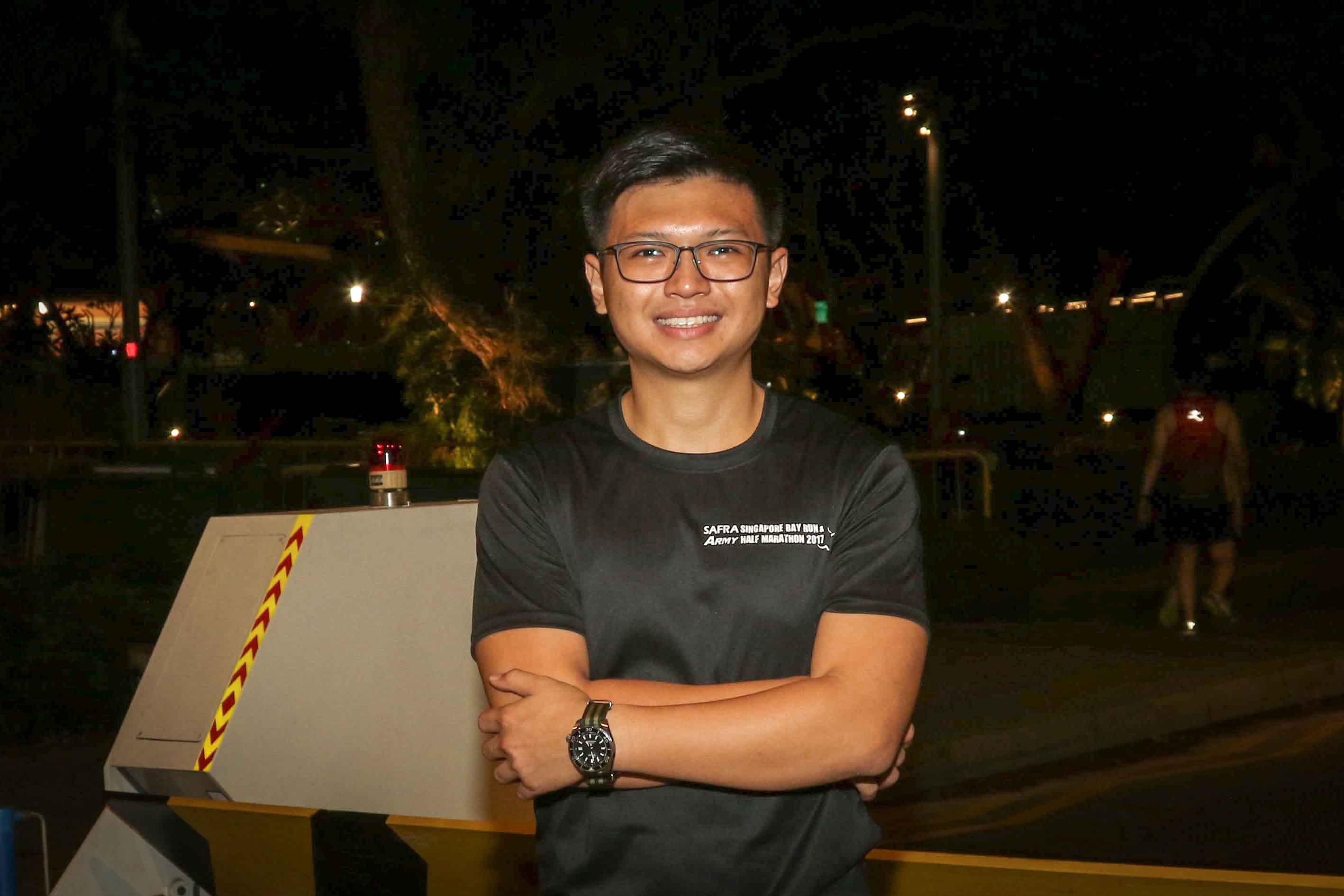
SSG Gary Kho, 12 C4I Bn.
Maintaining of Security - Traffic Marshalling
With crowds streaming in and roads closed off, Traffic Marshals were deployed to organise and ensure the security of the venue. One of the Traffic Marshals, LCP Timothy Wan Zhu-An from the 1st Battalion, Singapore Guards (1 GDS), shared why such a role was crucial and how his training prepared him well. "As a Traffic Marshaller, I redirected vehicles to avoid any clash with the route the runners were taking. In a big event like this, any setbacks - like a vehicle blocking the runners - no matter how minor they may seem, can build into big problems for the overall flow of the event. By preventing it, we're doing our part to ensure the event can run smoothly. The tough training we have gone through has developed our discipline to carry on doing a good job no matter how tired we are. The Peace-Time Contingency Operations training that we received gave us further insights into the identification of suspicious activities and ensured that we were able to handle any situation with the public."
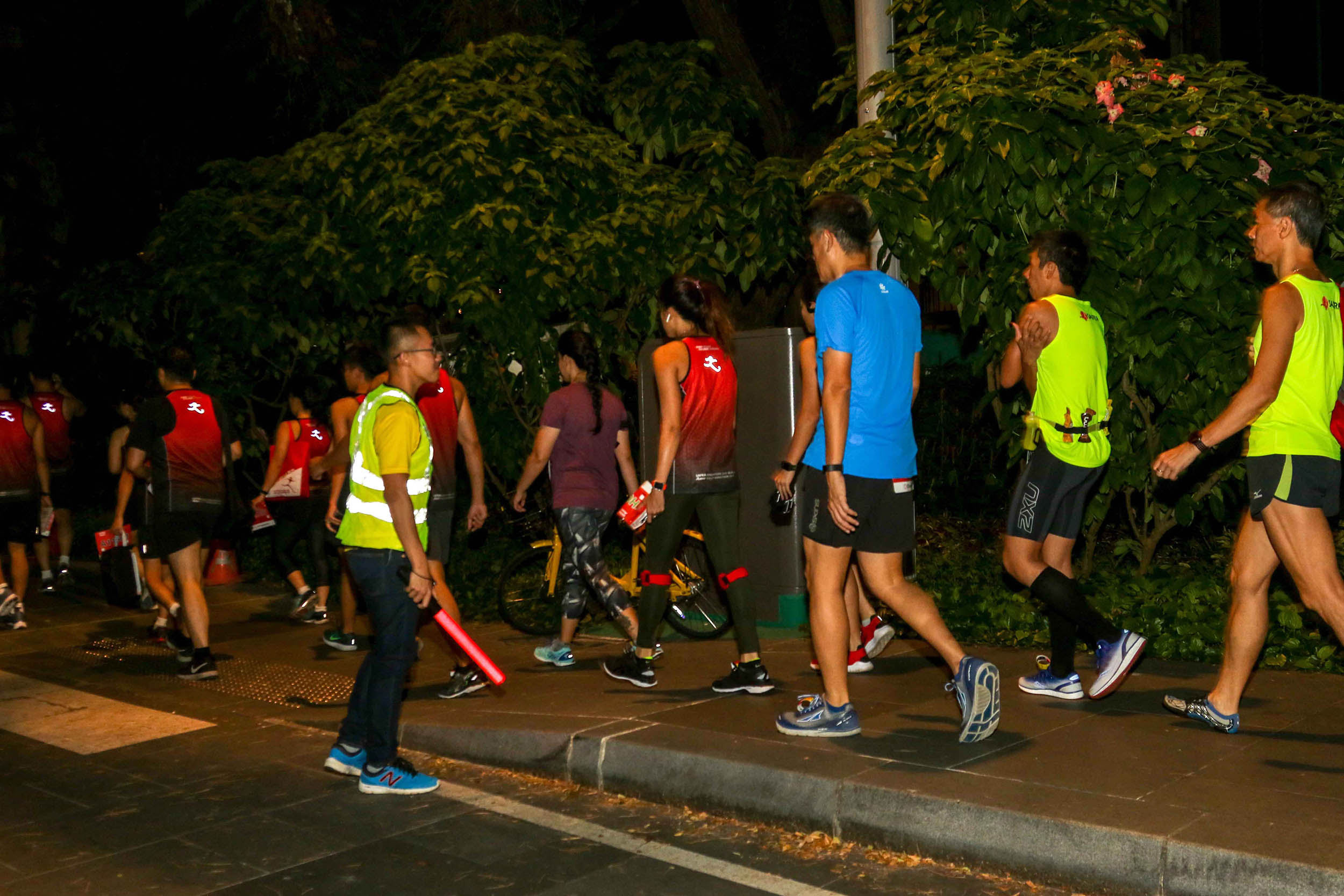
Facilitating the flow of the crowd.
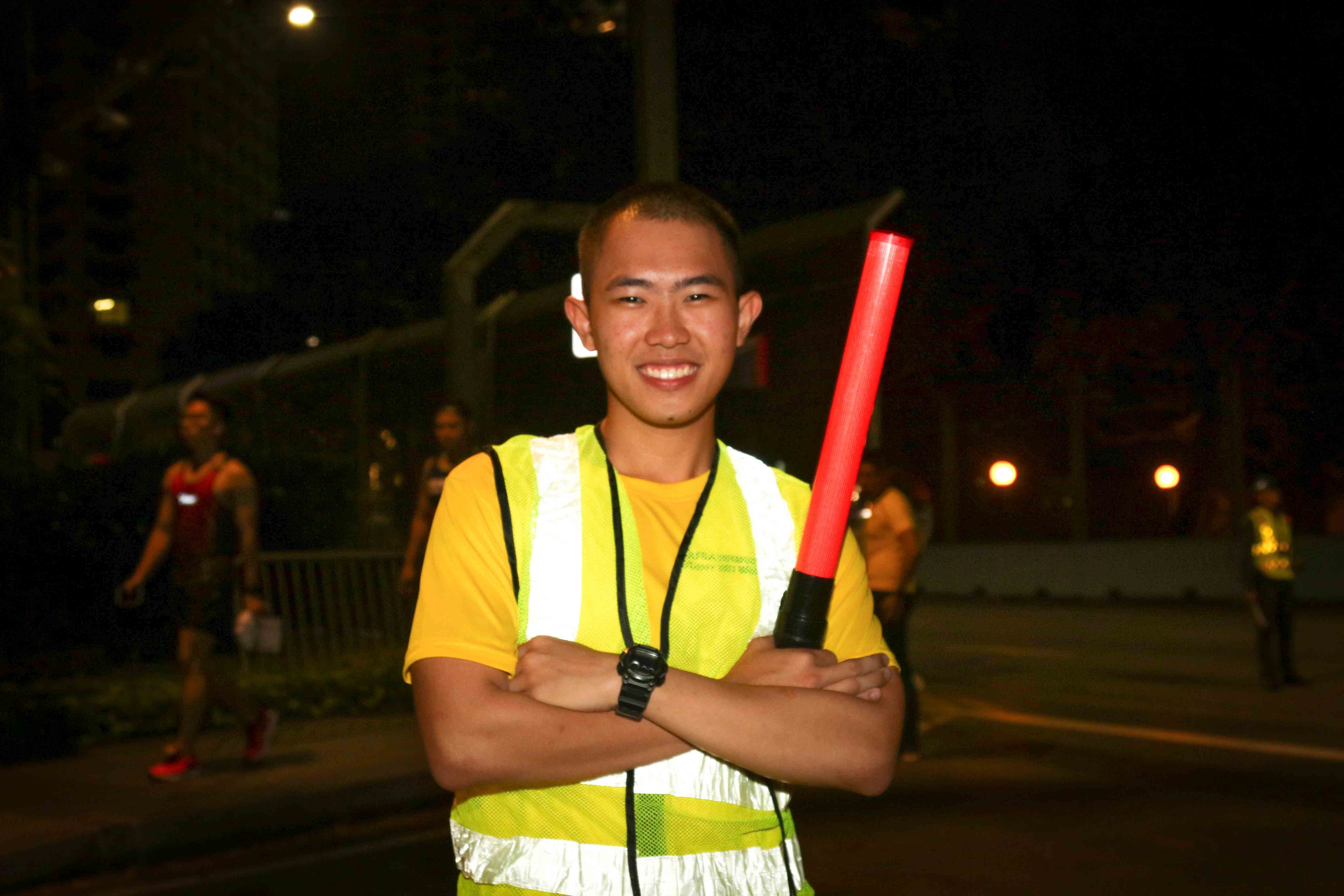
LCP Timothy Wan Zhu-An, 1 GDS.
Planning of Hydration Points
With the runners losing precious fluids throughout the race when they perspire, ensuring their rehydration is key to sustaining them during the race. 3WO Chang Wei Keat from the 4th Singapore Armoured Brigade (4 SAB) revealed the detailed planning and precision involved in ensuring the runners maintain peak performance during the run. "To make sure that participants remain hydrated but don’t get bloated during the race, we fill each cup three-quarters full, 6 ounces of water to be precise. You may notice that some water points only gave out water, while some had water and isotonic drinks, and others had bananas and isotonic drinks. This depends on the distance from the start point. We planned from the runner's point of view and worked together with the Centre of Excellence for Soldier Performance to determine the distance between each water point as well as the supplements to be given at each one."
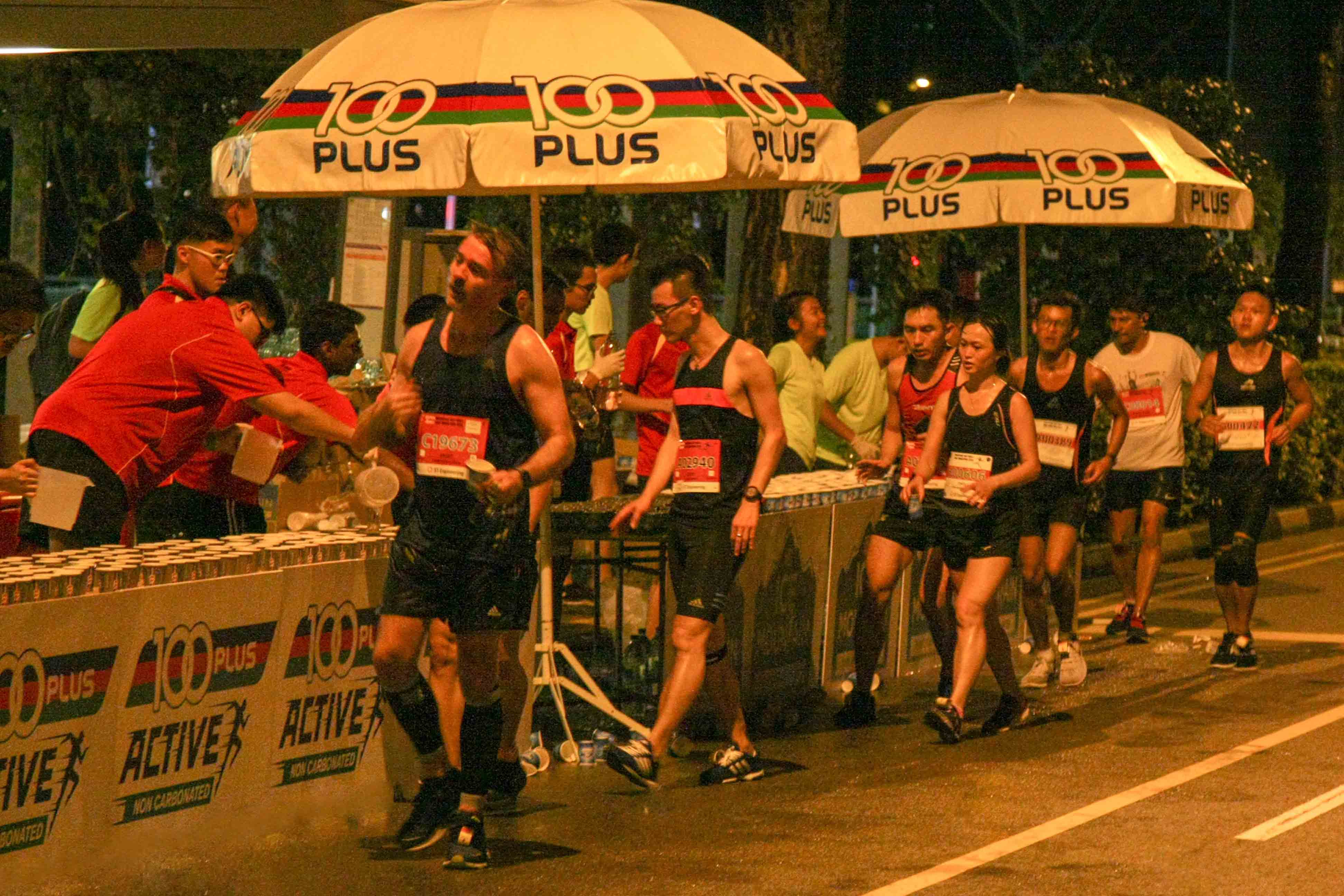
Runners hydrating themselves at the water point.
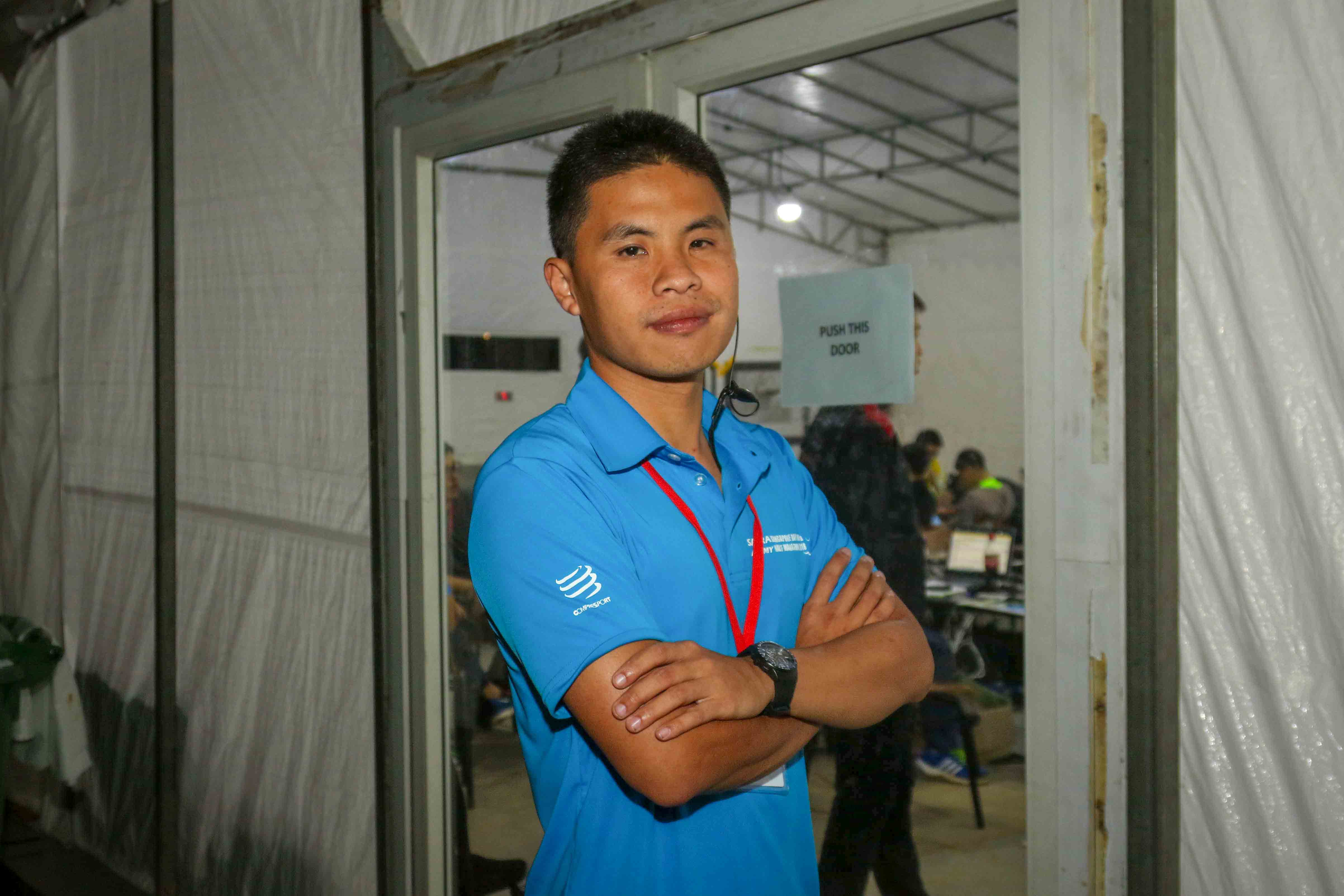
3WO Chang Wei Keat, 4 SAB.
Ready to Save
Indeed, it always pays to be prepared. Medical teams were on standby during the race, ready to tend to participants in the event of emergencies. Ms Eugenie Yien and 3SG Amirulrashid Bin Abdul Rahim from the SAF Medical Training Institute (SMTI) both emphasised the importance of simulations and shared how it ensured the operational readiness of the medical teams.
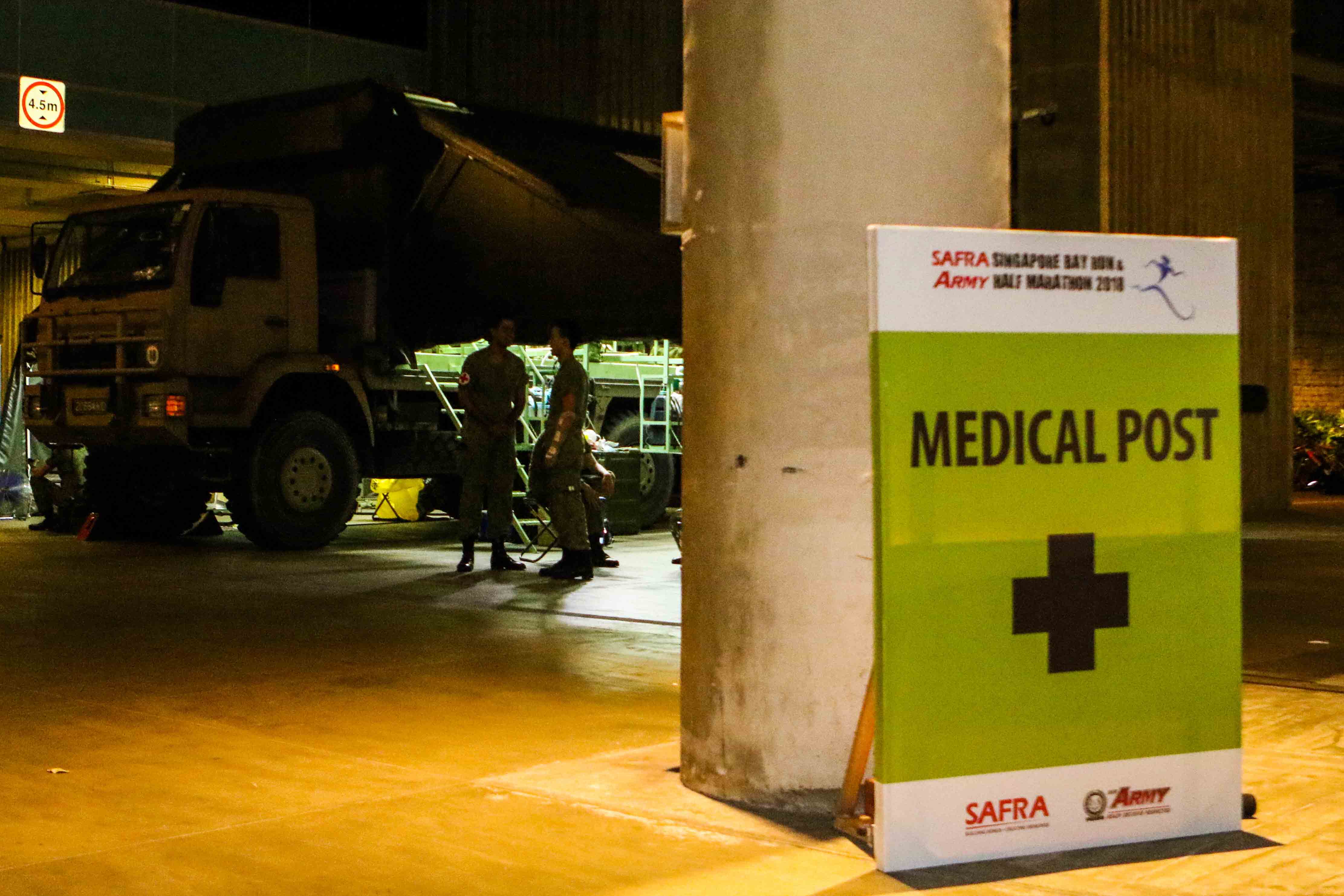
Medical Post stationed at Marina Barrage.
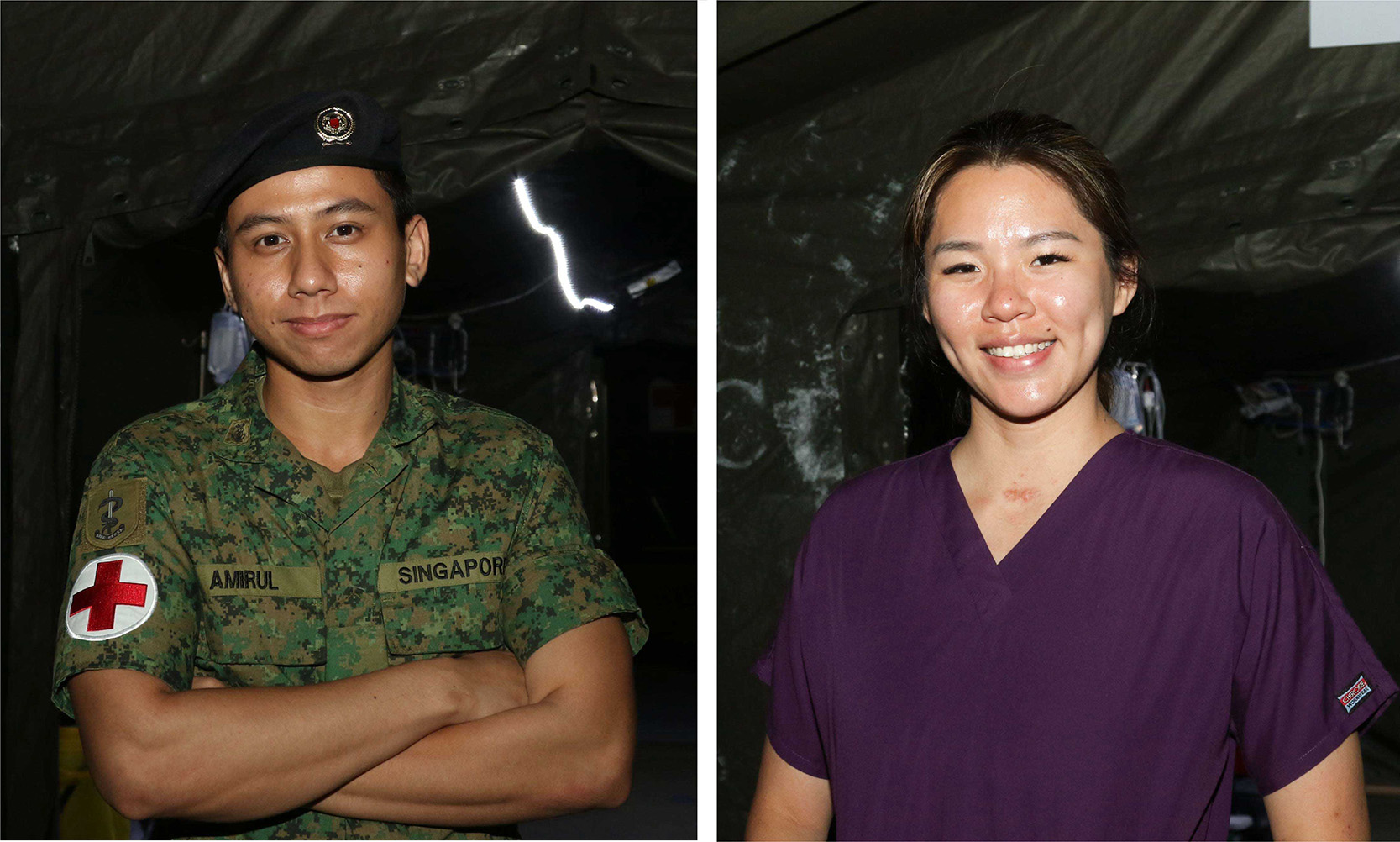
3SG Amirulrashid Bin Abdul Rahim (left) and Ms Eugenie Yien (right), SMTI.
Ms Eugenie shared "We set up our medical bays the night before, and ran simulation drills till the flag down timing. Simulation actually plays an important role in training because it provides a very safe and secure environment for our medics to practise their drills and protocols. In simulations, they are able to learn hands-on and subsequently debrief in a very systematic and safe manner before they go out to apply what they have learnt." 3SG Amirulrashid Bin Abdul Rahim echoed her sentiments, sharing that "the training help simulate actual scenarios in the most realistic manner. It helps to prepare me when we are receiving a casualty and improves our response time with muscle memory."
Running a Half Marathon extends beyond the course of the race, and was only made possible by the efforts of many individuals working tirelessly behind the scenes to keep the event flowing. We hope all participants had a great race and would like to thank everyone involved for making the race possible!
Written By: CPL Brandon Kit
Photography By: LCP Cyril Tang


